This guide provides an introduction to the scoping requirements of the ABA Standards and is intended to be used with a complete copy of the ABA Standards since it does not contain or address the full content of the Standards. It is important that users familiarize themselves with the specific scoping requirements contained in the ABA Standards.
Scoping Requirements

Requirements in Chapter F2 indicate which elements and spaces must be accessible on a site or in a facility (the scope of coverage). These “scoping” requirements apply technical provisions in Chapters 3 – 10 to those covered elements and spaces provided on a site.
Applicable building codes, design practices, and other factors determine the elements and spaces required for a site, including parking, means of egress, and plumbing fixtures. The ABA Standards, on the other hand, specify the elements and spaces provided that must be accessible.
Application
[§F201]
The ABA Standards apply to the various types of federally funded facilities subject to the ABA, from simple structures to complex, multi-facility sites. Requirements in the standards apply to both exterior and interior spaces and elements provided on a site, usually without distinction. Provisions for parking, for example, apply equally to exterior lots and to parking garages. The standards cover permanent facilities and temporary facilities (other than those used in construction), such as reviewing stands, stages, portable toilets, and temporary classrooms.
In new construction, all areas must be fully accessible, including multiple spaces of the same type, unless otherwise specified. Areas not required to be fully accessible include:
- certain limited-use or raised spaces that are exempt (§F203)
- spaces covered by scoping provisions that require only a specified portion of the total number to comply, such as dressing rooms and patient bedrooms (various provisions in Chapter 2)
General Exceptions
[§F203]
These structures and spaces are fully exempt from the standards and are not required to be accessible or on an accessible route:
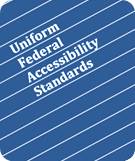




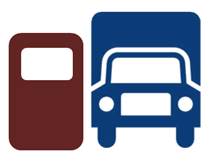
Detention/Correctional and Residential Facilities (§F203.8 - §F203.9)

Common use spaces in detention/ correctional facilities or residential facilities that do not serve accessible cells or dwelling units are exempt.
Certain Sports/ Recreation and Other Structures (§F203.10 - §F203.14)

These structures and spaces are also exempt:
- raised structures used solely for refereeing, judging, or scoring a sport
- raised boxing/ wrestling rings
- water slides and raised diving boards/ platforms
- animal containment areas not open to the public
Scoping Requirements
[§F204]
Scoping provisions for elements and spaces, which are summarized here, are further discussed with relevant technical provisions in the following chapters of this guide.
Site Arrival Points, Entrances, and Egress
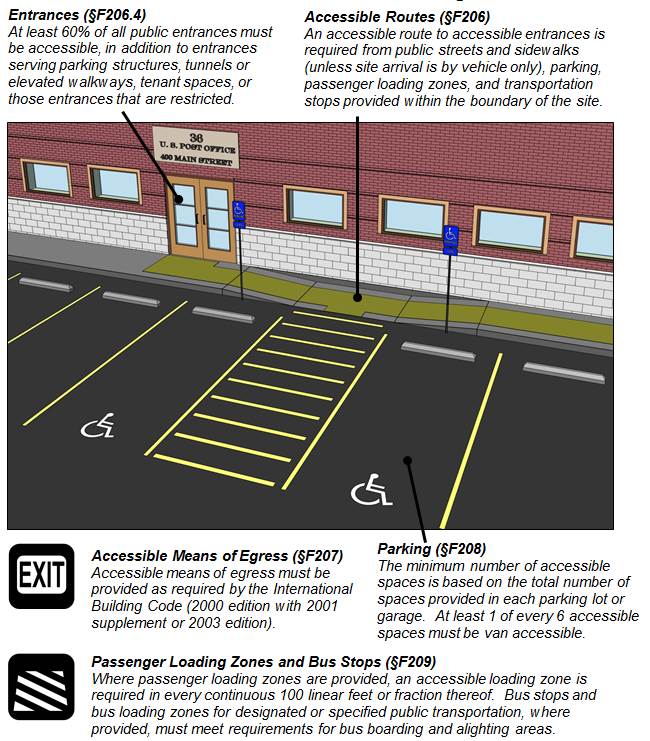
General Elements
Most scoping provisions apply to both interior and exterior elements where provided throughout facilities and sites (and are not limited to those in corridors as shown here).
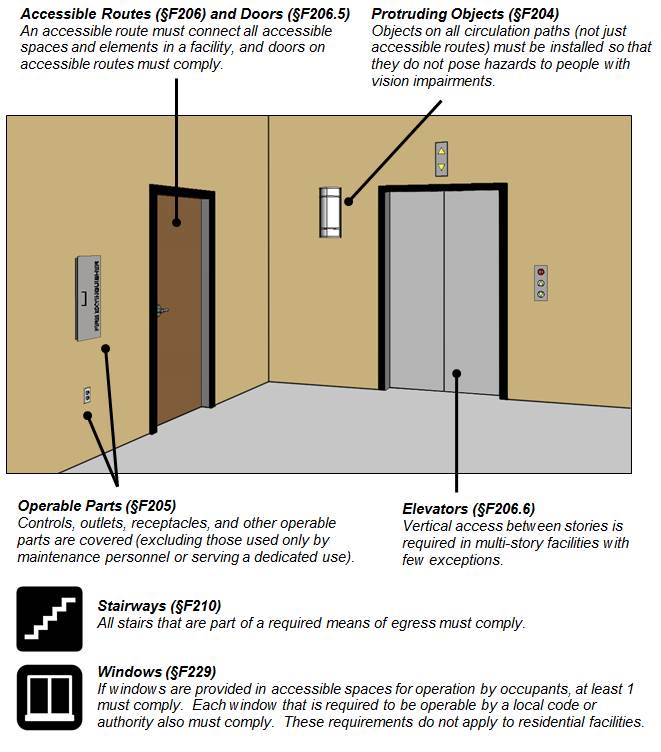
Communication Elements

Plumbing Elements and Facilities

Sales and Service Elements
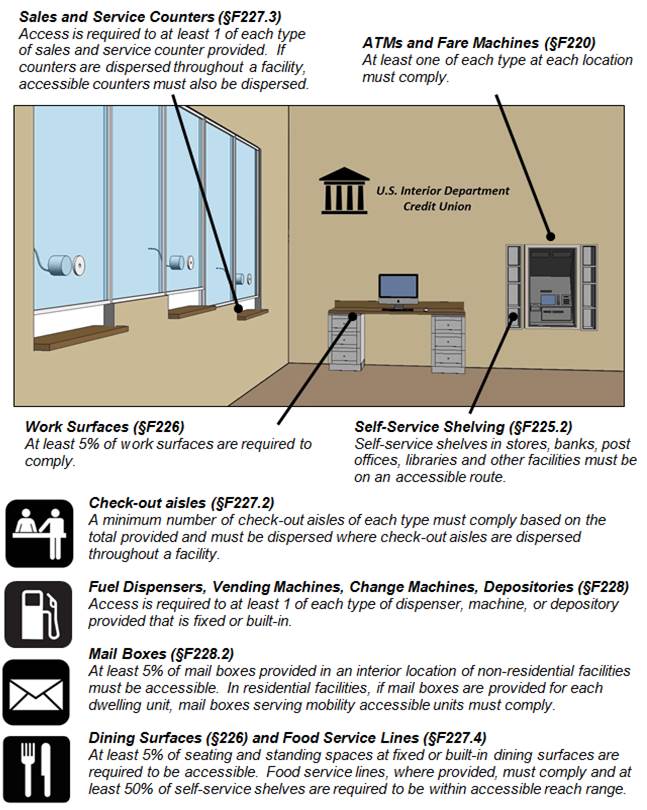
Specific Spaces and Occupancies
The ABA Standards include scoping requirements specific to certain types of spaces and facilities that apply based on the intended use and design. Spaces with multiple uses must meet all applicable requirements for each use. Scoping provisions for specific spaces and occupancies address:

Transportation Facilities [§F218] and Bus Stops [§F209]

Assembly Areas [§F221]

Dressing, Fitting, and Locker Rooms [§F222]

Medical Care and Long-Term Care Facilities [§F223]

Transient Lodging Guest Rooms [§F224]*

Storage [§F225]

Judicial Facilities [§F231]

Detention and Correctional Facilities [§F232]

Residential Facilities [§F233]

Recreation Facilities and Outdoor Developed Areas [§F234 – §F248]
Common Questions

Are all public use and common use areas required to be accessible?
All areas of facilities are required to be fully accessible in new construction except those that are specifically exempt (e.g., certain types of limited use or raised spaces) or that are covered by provisions that require only a specified portion to comply (e.g., transient lodging guest rooms and patient bedrooms). All other rooms and spaces, including multiple ones of the same type, such as patient exam rooms, classrooms, and courtrooms, are required to be accessible.
Are employee work areas required to be accessible?
Yes, the ABA Standards apply fully to employee work areas (unlike the ADA standards which have more limited requirements for such spaces). Elements used by employees in work areas, including work surfaces, must comply. Spaces used by employees for purposes other than work, including restrooms, break rooms, locker rooms, lounges, and parking are also fully covered.
Can access be provided after construction based on need?
Access required by the ABA Standards must be put in place and ready for use as part of construction. This is required in all but a few specified instances, such as:
- Toilet and bathrooms in residential dwelling units or accessed through an individual’s private office for his or her exclusive use are not required to be built with certain specifically enumerated access features, such as grab bars and lavatory clearances, if they are built according to criteria that will facilitate later installation or adaptation, such as reinforcement for grab bars and removable vanity cabinets.
- Vertical access to work stations in courtrooms, such as judges’ benches, can be provided after construction if space and other requirements are met to ease later installation of necessary ramps or lifts.




